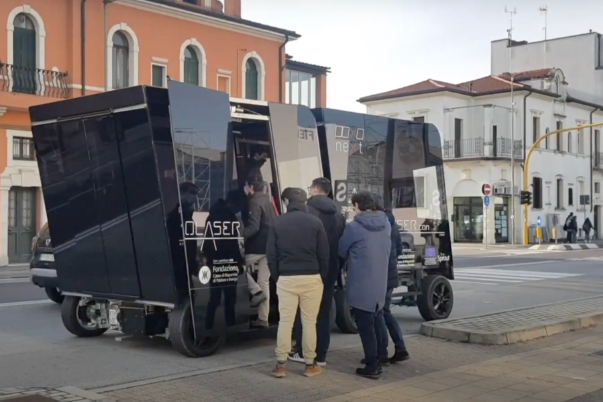

The Solutions Explorer lets you create alerts that match your needs. You can create several alerts and you will receive a notification each time a new Solar Impulse Efficient Solutions is labelled and matches your filters.
Your Search Alerts will show up here.
Sign in to create alerts for your filters and search terms.
Sign inDon't have an account?
Sign upAugust 10, 2021
Padua Municipality
Padua

Experimentation was carried out both on the street and through numerical evaluations and software simulations. The on-street experimentation was carried out with first one module and then two NEXT modules, both individually and docked and capable of moving on public roads, in open and/or segregated locations, in order to verify the parameters of flexibility, performance, optimization, ease of use, consumption, and innovativeness. The results in terms of fuel consumption reduction are closely linked to the modularity of the Next system, which can in fact vary the number of docked vehicles according to fluctuating demand. In short, you will no longer see 18-ton buses running with a few people inside during off-hours or on weekends.
Energy savings are estimated to range between 20% and 60% when compared to the standard electric bus model, BYD K9, already in use in Padua. When compared to a diesel bus, the savings amount to approximately €33,000 and 88 tons of CO2 per bus replaced with five Next modules. Considering an energy cost of €0.33 per kWh and a bus fuel cost of €1.065 per liter, the annual savings are as follows: €29,317 in energy costs compared to an electric bus and €33,433 in fuel costs compared to a diesel bus.
NEXT is a modular vehicle that could be considered as the "Stem Cell of Transportation" It could behave as a shared car or as a taxi but also as a bus, last-mile delivery van, a truck for long distances, or an interchange hub for passengers and goods without outdoor transhipment. NEXT is also an advanced smart transportation system based on swarms of modular electric vehicles. Each module/vehicle can join and detach with other modules on standard city roads. When joined, they create an open, bus-like area among modules, allowing passengers to stand and walk from one module to another. Modularity allows"en-route-transfer", that optimizes system capacity, cuts cost and traffic, and increases ubiquity and comfort for the passengers.
Share
The information set out above, is solely for the purposes of information and the Solar Impulse Foundation does not provide any guarantee as to its authenticity, completeness or accuracy. This information does not constitute investment advice or a recommendation to buy into, transact or to enter into any agreement with any of the parties or persons mentioned above. Potential investors or interested parties are solely responsible for their investment or business decisions and for performing any due diligence required by the circumstances. The innovator has asserted ownership of the intellectual property rights for images, videos, and content showcased above, affirming full and unrestricted usage rights, and has provided explicit permission for the Solar Impulse Foundation to publish such information designated as "public" in the application form.